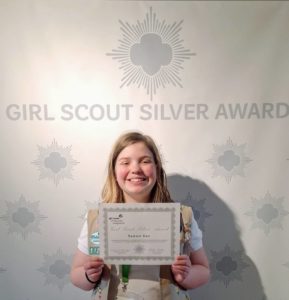Did you know you can make an electric Circuit using simple eating utensils like a fork and a spoon? Creating a circuit isn’t as complicated as you would think and is a great science activity to do with kids of all ages. The key is to make a path through which electric charges can flow to light up a light bulb.

What you need to make a Circuit
You will only need a few items to make a circuit, but you will need the exact items listed:
- C or D Battery (D battery works better for me)
- Flashlight light bulb
- Stainless steel fork
- Stainless steel spoon
- Tape (any kind)
How to Make Your Circuit
Making a circuit with a spoon and fork is easy to do. Here are the steps:
- Tape your light bulb to the positive end of the battery leaving the base slightly visible and the bulb completely visible.
- Set your battery on top of the back of your spoon on the negative end of the battery. You may need to play a little balancing act.
- Touch the forks prongs to the base of the light bulb.
- Touch the ends of the spoon and the fork together.
- You have created a circuit!
Did your light bulb light up when you made the circuit? If it didn’t, make sure you are using a new battery, the right size, stainless steel utensils, and everything are connected.
How does a Spoon and Fork Create a Circuit?
You may be wondering how something so simple can create light, right?! The bulb lights up when the circuit is complete. This means there is no break in the path of the electric charge. Electricity is originated from the battery.
For a circuit to be complete, the electric current must have good conductors to travel through. Steel, such as the spoon and fork are good conductor and the electricity can travel through them to light up the bulb. What other things are good conductors?
Try other Pathways to Complete the Circuit
In order to complete a circuit, the items you use must be good conductors of electricity and you always need a source such as a battery.
- Is a paperclip a good conductor? Try using a paperclip instead of a fork and a spoon to connect the two ends to the light bulb. What happens?
- Use a flexible, insulated wire that is stripped 2 inches on either end. Does the bulb light brighter? Is there a difference.
- What happens when you try to use plastic silverware? The circuit is complete, but does the bulb light up?
Materials that aren’t good conductors won’t light up the bulb. An insulator does not let electricity pass through it. These are great for keeping us safe when we use electricity. Knowing how electricity works, conductors and insulators will help you and your child to understand the electricity in your home. Always be careful when using electricity, but have fun exploring and learning new things! What other ways have you made a circuit in your home?

What Visiters Had To Say